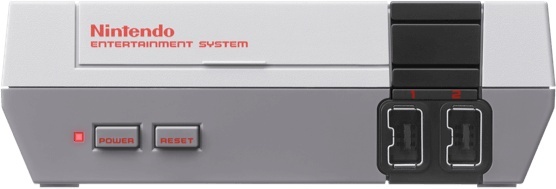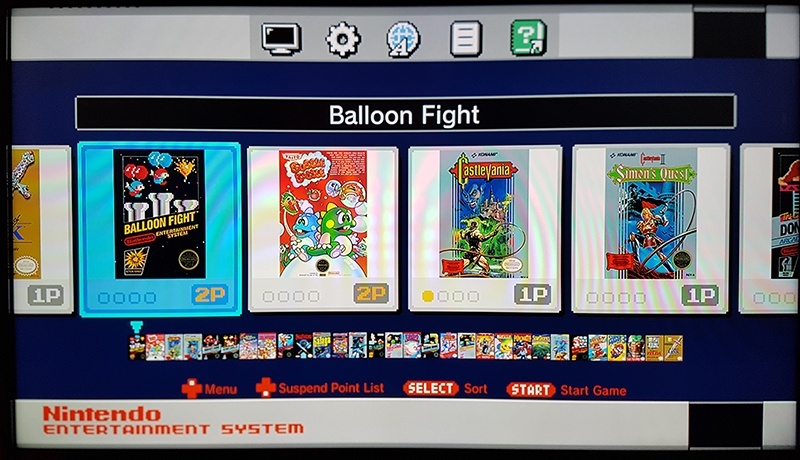Fans have seen rereleases of the NES library's heavy hitters many times over, be it through bonus inclusion on the GameCube version of Animal Crossing, a special line of ports on the Game Boy Advance, or passing over Wi-Fi with Virtual Console downloads, but not from dedicated hardware until now. How does this diminutive edition of the Nintendo Entertainment System operate in today's gaming ecosystem?

With the Nintendo Classic Mini: Nintendo Entertainment System (known in North America as the Nintendo Entertainment System: NES Classic Edition), Nintendo has clearly aimed to keep the spirit of the original machine intact. From the box that recalls the design and display of its bigger namesake, to the packaging that harkens back to many other fully-fledged console layouts, the NES Mini most importantly retains its key hardware design of grey and black, albeit in a far smaller form factor, as the edition name would suggest. Complete with a controller both visually and aesthetically identical to the classic NES pad, the machine looks the part. Light and elegant, the NES Mini is simple to fit in any entertainment centre, and even easier to move around when need be.
Packed with a basic instructional booklet, HDMI cable and USB cable, the system comes with everything essential to get started with, save one minor element. Whilst Nintendo has one-upped itself by actually including a method of powering the machine, unlike with the New Nintendo 3DS boxes, the USB cable is still missing the plug attachment needed to draw from. Not so much of an issue for homes already equipped with USB power ports in walls, or for buyers already with a spare USB plug attachment, but a notable omission nonetheless.

- Balloon Fight
- Dr. Mario
- Donkey Kong
- Donkey Kong Jr.
- Excitebike
- Kid Icarus
- Kirby's Adventure
- Ice Climber
- Mario Bros.
- Metroid
- Punch-Out!!
- Star Tropics
- Super Mario Bros.
- Super Mario Bros. 2
- Super Mario Bros. 3
- The Legend of Zelda
- Zelda II: The Adventure of Link
This selection covers a vast amount of the NES's heavy hitters and most of Nintendo's biggest franchises. Many have been seen multiple times in other rereleases, but have now debatably seen their best emulation standard as an official release.

Games from various third parties include:
- Bubble Bobble
- Castlevania
- Castlevania II: Simon's Quest
- Double Dragon II: The Revenge
- Final Fantasy
- Galaga
- Ghosts 'n Goblins
- Gradius
- Mega Man 2
- Ninja Gaiden
- Pac-Man
- Super C
- Tecmo Bowl
A good number of these games helped define the Nintendo Entertainment System and establish franchises of their own—Final Fantasy and Mega Man especially, and are thus excellent choices for the overall line-up. As with the Nintendo titles, the emulation quality for these games is excellent; all bells and whistles from the originals are kept intact, even the bordering and sound clipping in a few for that extra authentic feel.
The NES Mini offers up three ways to view the games, selectable through the game selection menu: the CRT Filter option replicates the faint scanlines that older television sets had, the 4:3 ratio picture slightly stretches the set image, and Pixel Perfect is as the developers intended.
As with recent Virtual Console releases, Nintendo has also graced Europeans with a full set of 60 Hz games, all equal to their American and Japanese counterparts, and no longer plagued with slowdown and horizontally-squashed screens. This, on top of the superior emulator quality over the Wii U equivalents, gives hope to the future Virtual Console on Switch.

The one major shortcoming of the NES Mini, and that is quite literal, is the length of the controller cable. Simply put, it is absolutely nowhere near long enough. For purchasers wanting to add the NES Mini to their entertainment centre, this becomes very difficult to do without having a TV display right in their face.
It could be argued that Nintendo wished to bring back the authenticity of sitting on the floor with the console nearby when playing games, and there is evidence for that by the Reset button on the machine, with this being the only way by default to exit to the game selection menu. Most will disagree on this and point to the original controller's long cable length seldom becoming a hindrance. Those seeking for a couch gaming experience with the NES Mini would be well advised to seek out extension cables to aid the only harsh negative in a great retro package from Nintendo—and hopefully the first of many more.
Great - Silver Award


 Sign In
Sign In 18.11.2016
18.11.2016  Azuardo
Azuardo 
 Link to this post:
Link to this post:  Trepe
Trepe  Subscribe to this topic
Subscribe to this topic Features
Features





 Top
Top

